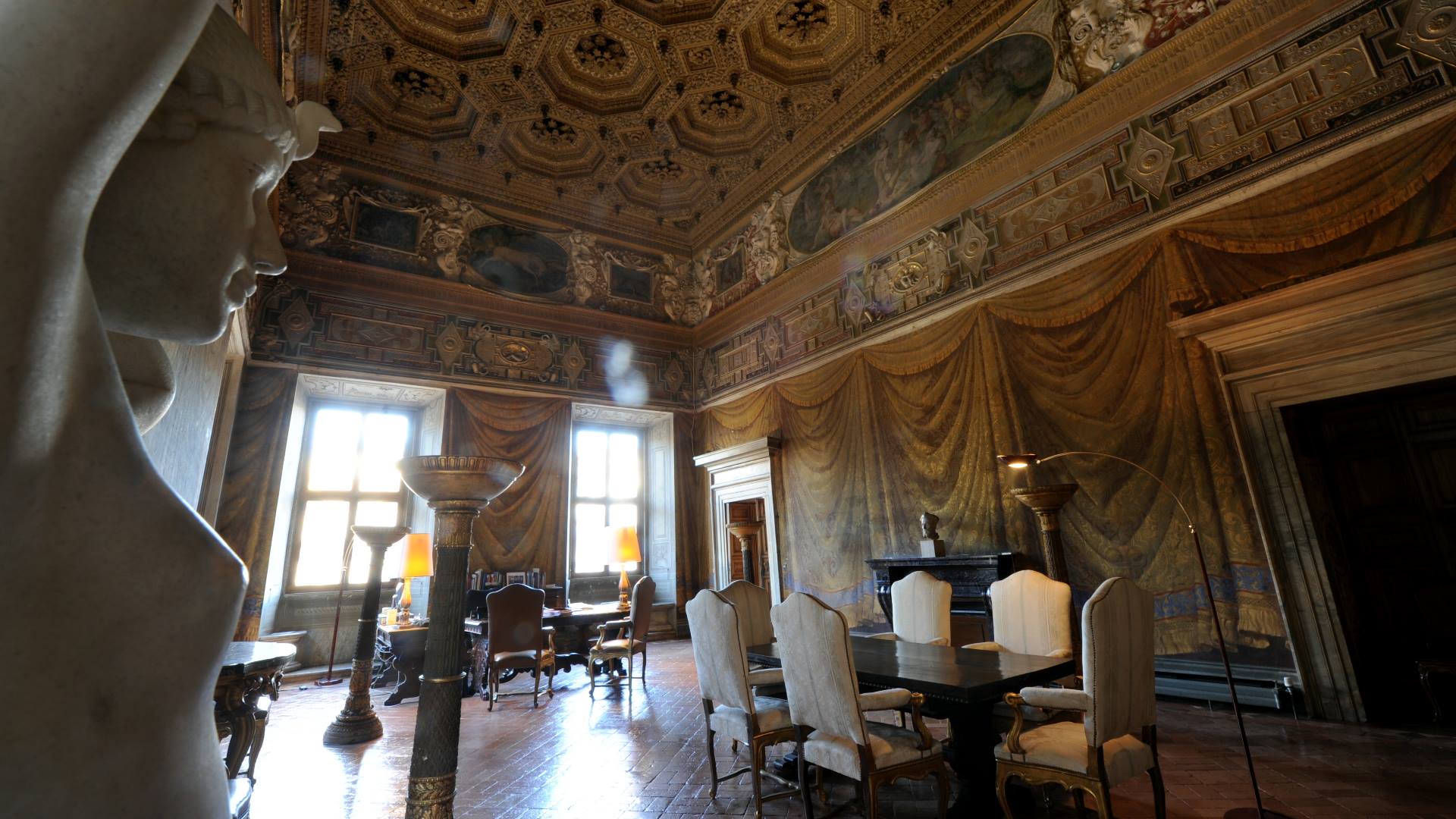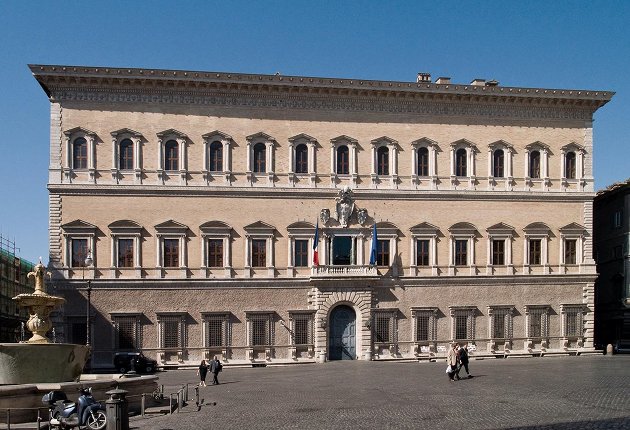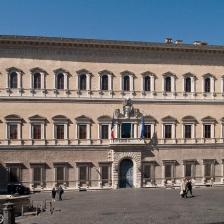

It is one of the most beautiful and imposing palaces of 16th century Rome and owes its name to one of the most famous families of Renaissance Rome. Commissioned in 1513 by Alessandro Farnese (1468-1549), the future Pope Paul III, and completed in 1589, Palazzo Farnese was built under the direction of four great architects: Antonio da Sangallo the Younger, to whom we owe the original design, Michelangelo (1546-1549), Giacomo Barozzi da Vignola (1569-1573), who designed the rear façade, and finally Giacomo Della Porta.
On the Piano Nobile, the famous Galleria Farnese was frescoed between 1597 and 1604 by Annibale Carracci, who collaborated with his brother Agostino, Domenichino and Giovanni Lanfranco. Using optical and perspective games, the frescoes with mythological subjects (largely taken from Ovid’s Metamorphoses) superimpose sculpture, painting and architecture, in a triumph of light, shapes and colours that has amazed and fascinated observers for over four hundred years. Annibale Carracci is also responsible for the frescoes in the cardinal’s private study known as the Camerino Farnese, while the Sala dei Fasti Farnesiani was frescoed by Francesco Salviati and the brothers Taddeo and Federico Zuccari.
The palace currently serves as the French Embassy in Italy and houses the École française de Rome (research institute and library). Entrance to the palace is only possible with a guided tour in Italian, French and English by purchasing tickets on the official website (up to five days before the desired entry date and time). Also open to visitors since May 2024, are the Basements of Palazzo Farnese. The Basements house archaeological finds from three different periods of ancient Rome, including two extraordinary black and white mosaics, the first depicting animals and sea monsters, the second spectacular circus acrobats on horseback, the Desultores. Palazzo Farnese is a diplomatic building, security checks are reinforced and security guards have the right not to admit anyone who refuses to comply.
Photo: Cardinal's Room, Palazzo Farnese - Ambassade de France © Eric Vandeville
Information
 Condividi
Condividi
Location
To find out about all accessibility services, visit the Rome accessible section.












































